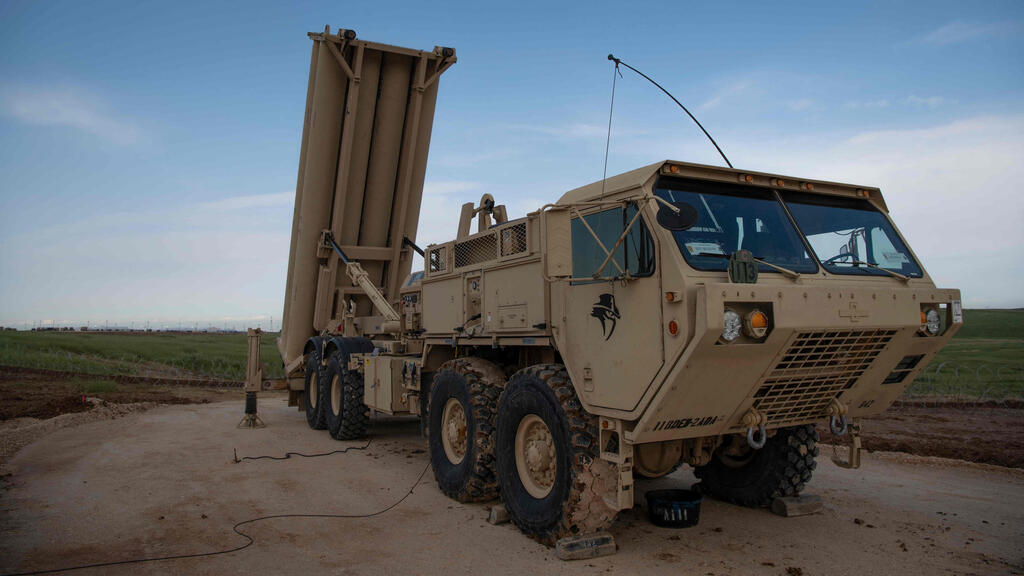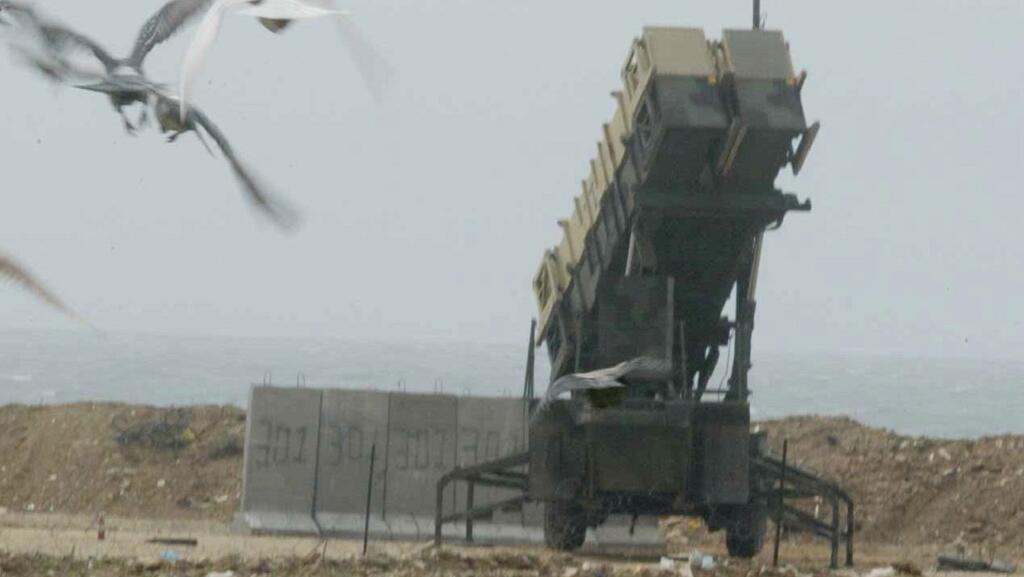Israel’s emerging agreement with the U.S. to deploy the THAAD (Terminal High Altitude Area Defense) system to the country stems as much from an American necessity as it does from an Israeli need.
The need is clear for the IDF: it requires additional American air defenses to counter the hundreds of missiles that Iran could launch if and when Israel responds to the October 1 attack.
2 View gallery


THAAD battery in Israel in 2019
(Photo: AFP PHOTO / HANDOUT / DVIDS / US ARMY / Staff Sergeant Cory D. Payne)
In such a scenario, the quantities matter. The more missiles launched in a single barrage or in a few smaller waves to overwhelm Israel’s defense systems, the more launchers, interceptors and radars are needed.
Israel has several layers of interceptor missile batteries. At the top tier is its Arrow 3 system, which intercepts attacking missiles hundreds of kilometers away outside the atmosphere. Below it is the Arrow 2, which intercepts missiles near the atmospheric boundary, over 100 kilometers (62 miles) away.
Further below is the David's Sling system, designed to defend against missiles at greater distances within the atmosphere. The lowest tier is the Iron Dome, which provides localized protection and intercepts short-range missiles up to 100 kilometers (62 miles).
THAAD’s capabilities are comparable to those of Arrow 2, but their methods differ. The Arrow 2 warhead explodes near the ballistic missile, damaging or diverting its trajectory. THAAD, on the other hand, intercepts by directly hitting the missile. In modern versions of the system, the THAAD missile physically strikes the ballistic missile's warhead with pinpoint accuracy.
Iran has attacked Israel twice so far. The first was on the night of April 13-14, in response to the assassination of Hassan Mahdavi, a Quds Force commander in Syria and Lebanon, in Damascus. The second, on October 1, was in response to the elimination of Hassan Nasrallah in Beirut. In both attacks, the U.S. aided Israel in intercepting the ballistic missiles. This support came from Sixth Fleet ships stationed in the eastern Mediterranean off the coasts of Turkey and Syria.
Iranian missile attack against Israel
These destroyers are equipped with the Aegis system, which uses SM-3A2 missiles. These can intercept ballistic missiles at high altitudes outside the atmosphere at ranges of up to hundreds of kilometers.
In this way, the SM-3A2s could intercept missiles approaching Israel from the east and northeast. While the Americans intercepted dozens of Iranian missiles during the April attack, the Sixth Fleet reported that they intercepted "up to 12 missiles" in the October 1 attack.
This reduction likely wasn't due to poor performance but to several factors, the main one being the U.S.’s munitions rationing. According to American sources, this wasn't a matter of saving money. Instead, the need to support Israel during two attacks within a few months led to a dangerous depletion of the Sixth Fleet's interceptor inventory in the Mediterranean. The Americans had to be more frugal since this fleet has many other NATO missions.
Another reason likely contributing to the reduced missile interception was a suboptimal division of defense zones between the Israeli and American air defense systems, resulting in some missiles slipping through the gaps. In anticipation of a possible future attack from Iran, the Pentagon, U.S. Central Command (CENTCOM) and the IDF decided to address both of these issues by deploying the THAAD system.
While a THAAD missile isn't much cheaper than an SM-3 (about $15 million), the U.S. military has seven full THAAD batteries for intercepting ballistic missiles. Each battery includes 4-8 launchers, with each launcher holding eight missiles. This allows the U.S. to transfer one battery to Israel (4-6 launchers capable of intercepting around 40 ballistic missiles) without creating a defense gap in NATO's supplies.
THAAD testing in the U.S.
(Video: Reuters)
Why now
American THAAD missiles have already been deployed in Israel in the past, though not in live combat, as part of joint air defense exercises. The U.S. also maintains a missile interception command center in Israel, fully coordinated with the Israeli air defense system.
More importantly, the THAAD's X-band radar for detection and fire control provides a significant boost to Israel's ground-based detection capabilities and can also receive data from other batteries in Saudi Arabia and the United Arab Emirates (Saudi Arabia purchased seven THAAD batteries after the 2019 attack on its oil facilities and two are already operational. The UAE's THAAD system isn’t yet operational).
Bringing THAAD batteries to Israel enhances the support that CENTCOM provides to Israel's air defense both in terms of detection capabilities and the number of interceptors. If the deployment proceeds, it would also send a deterrent message to Iran and other regional players about the U.S.'s readiness to aid Israel and efficiently operate their combined missile interception systems.
What isn’t clear yet is why the THAAD batteries haven’t yet arrived in Israel despite the issue being discussed for weeks following the lessons learned from the low American interception rate against the October 1 Iranian attack.
Washington understands Israel's need for THAAD and the need for American troops to operate the system. Some suggest that the delay may be an American tactic to slow Israel's response to Iran. There's no doubt that Israel is preparing to respond and anticipates retaliation and the timing of the THAAD battery's arrival is a significant factor in this consideration.
This isn't the first time American interceptor missiles have been stationed in Israel and operated by U.S. troops. The last incident was during the First Gulf War in 1991 when the U.S. deployed Patriot batteries in Israel to persuade it not to retaliate against Iraq after Saddam Hussein launched over 40 missiles at Israel.
Those were older Patriot systems, which failed to intercept a single ballistic missile but did cause damage and injuries when one landed on a home in Ramat Gan.
The Patriot system was a relatively short-range interceptor, whereas THAAD is designed for long-range interception, making accidents of this kind less likely. THAAD would be a significant and essential addition to intercepting missiles not only from Iran but also from Syria, Yemen and Iraq.
Get the Ynetnews app on your smartphone:





